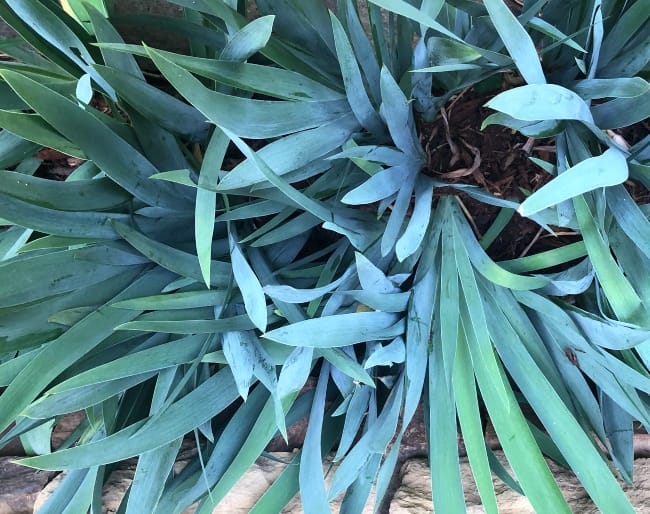

Uh oh...
It appears that you're using a severely outdated version of Safari on Windows. Many features won't work correctly, and functionality can't be guaranteed. Please try viewing this website in Edge, Mozilla, Chrome, or another modern browser. Sorry for any inconvenience this may have caused!
Read More about this safari issue.

I enjoy each season in my garden, but I find summer to be more challenging and less inspirational than spring. Hot temperatures and sporadic rainfall (during a normal year) bring stress to both plants and gardeners.
This year in the Northern Hemisphere, summer officially starts on Friday, June 21. On that day, the sun will reach the highest and most northern point in the sky. What does this mean for your garden? The sun’s rays will strike your garden at a more direct angle, and the soil will warm more quickly. That’s a good thing if you are prepared.
Before we melt into the dog days of summer, I have twenty things you can do during late spring/early summer to prepare for gardening under the July and August sun.

- Those annuals you’ve been eyeing at the nursery? Plant them now so they will acclimate to the warming days. Annuals provide a bright pop of color during late summer. Be sure to keep new plants well-watered. (This year, rain has been plentiful. But even a few windy days without rain can dry out baby plants.)
- Add a layer of mulch now, and you won’t spend as much time weeding later.
- Check your garden center for discounted spring-blooming perennials (those that are no longer blooming) such as iris. Plant them today and next spring when they bloom, you’ll feel oh so clever for having bought them at half price.
- Prune spring-blooming shrubs such as lilac and viburnum. (But first, make sure you understand the growth habit of your particular shrub. Some plants set blooms on old wood and some flower on new growth.)

- Divide iris 6-8 weeks after blooming.
- Head to the grocery store and buy a gigantic bag of granulated sugar. This time of year, you’ll need it for the voracious hummingbirds. Summer means cleaning and changing the water in your feeders every few days. Tip: There’s no need to buy red hummingbird food at the garden center. Make your own by dissolving 1 cup of sugar in 4 cups of water. Let it cool before serving.
- Keep birdbaths filled and cleaned. Bird feeders, too.
- Tis the season for problems and pests. As the weather heats, watch for hornworms, thrips, and other unwanted guests by visiting your garden every single day. Look for powdery mildew on crape myrtles and Japanese beetles on roses. (If you find signs of pests, treat according to recommendations from your local nursery or extension office. Personally, I don’t advocate insecticides because chemicals harm beneficial insects.)
- If you aren’t growing milkweed, plant some for the monarchs!
- To encourage vigorous blooms, deadhead perennials regularly as blooms wither.

- Cut back asters and pinch back chrysanthemums until mid-July to keep them from getting too leggy. Toward midsummer, cut back annuals by 1/3 to promote fresh new growth.
- Water in the early morning, 1.5 – 2 inches per week. Water consistently so that fruit develops properly.
- Set out warm season vegetables early in June. Plant melons, herbs, and veggies according to planting guide for your area of Arkansas. (P.S. Summer is the time to plant pumpkins for Halloween!)

- Stake plants that need extra help during summer, such as tomatoes and certain flowers like delphinium.
- Harvest veggies during early morning or early evening (but not during the heat of the day). Harvest certain veggies daily so they don’t become tough and bitter. Dig garlic, onion, potatoes.
- Remove fallen fruit. Fruit that is left to rot on the ground attracts pests and disease. If you grow berries, check them daily. I assure you, the birds are doing just that.
- Plant peas and cole crops for fall harvest during summer.
- As the days get hotter, let your grass grow longer by setting your mower blade higher and mowing less frequently. A short haircut in the heat of summer will stress your lawn. Also, be careful with lawn fertilizer in summer. You could burn your grass.

- Cut a bouquet of flowers and bring them inside to admire.
- Hang a hammock. From your comfy spot, watch the clouds drift by. Maybe take a Sunday afternoon nap. Enjoy your serene corner of the earth. You deserve it!
Everyone’s garden is different. And even the smallest garden has microclimates. We learn the nuances of our land and soil by spending time with our garden, asking questions when plants don’t thrive, striving to be better caretakers of our green spaces.
What are you doing now to prepare for summer gardening in the Natural State?
Happy summer gardening!
We do the work.
You check your email.
Sign up for our weekly e-news.
Get stories sent straight to your inbox!













Like this story? Read more from Talya Tate Boerner
Do you set resolutions in January? For me, the beginning of a new year...
I always equate dragonflies to carefree summer days. My sister and I...
This spring, as you plan your Arkansas garden, why not plan for...
Join the Conversation
Leave a Comment